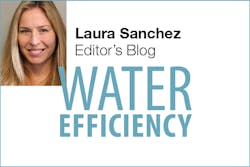About 96% of the Earth’s water can be found in its oceans. As desalination technology becomes increasingly cost-effective and efficient, a growing number of communities around the world are becoming reliant on seawater for survival.
In reverse osmosis, the most common desalination process, water is forced through a membrane that selectively filters out contaminants on a molecular level. Researchers from the University of Connecticut have recently developed a new method of manufacturing membranes that they believe may transform the industry.
The traditional method for producing ultra-thin membranes is through interfacial polymerization, a process that relies on a self-terminating reaction between two chemicals. It’s a reaction that’s challenging to control, and therefore regulating the thickness and surface texture of the membrane is difficult as well.
Researchers explain that being able to fine-tune the thickness and smoothness of membranes would help optimize water flow during RO, enhance energy efficiency, and reduce membrane fouling. Therefore, using a technique called electrospray ionization, the University of Connecticut team has developed a way to 3D print membranes to precise specifications of thickness and smoothness using a highly controllable process. Their findings are published in Science.
Whereas typical polyamide membranes have a thickness between 100 and 200 nanometers (nm) that can’t be controlled, the electrospray method can produce membranes as thin as 15 nm with roughness as low as 2 nm (as opposed to the standard 80 nm).
“This method is not limited to making membranes for RO,” explains Jeffrey McCutcheon, study author and UConn School of Engineering’s Al Geib Professor of Environmental Engineering Research and Education. “In fact, we hope that this method will enable new materials to be considered for a myriad of membrane separation processes, perhaps in processes where those materials were not, or could not, be used before.”

